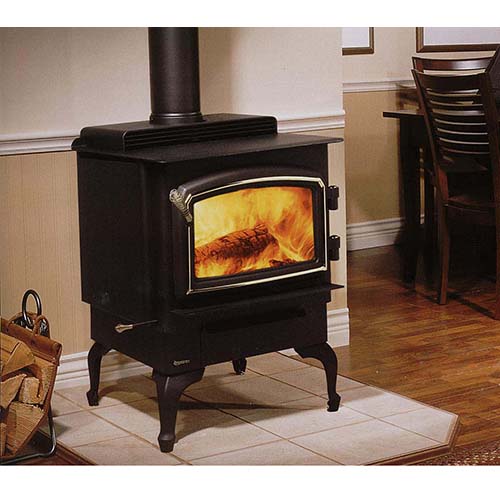A Wood Stove in Winter is Nothing Less Than Excellent
When it comes to wood stoves, we only sell the best. Ashbusters has skilled wood stove installers that can help you get these wonderful fireplace stoves up and running in no time. The wood stove installation is not included with the purchase.
Check out some of our quality products below.
Osburn Wood Stoves

Osburn Matrix Wood Stove with Blower
Heats up to: 2,100 sq ft
Firebox Capacity: 2.4 cu ft
Size: 75,000 BTUs
EPA Certified: 3.9 gph
Efficiency: 75.2% (LHV)
Burn Time: Up to 8 hours
Maximum Log Length: 20″

Osburn Soho Wood Stove
Heats up to: 1,500 sq ft
Firebox Capacity: 1.7 cu ft
Size: 55,000 BTUs
EPA Certified: 4.0 gph
Efficiency: 71.6% (LHV)
Burn Time: Up to 6 hours
Maximum Log Length: 17″
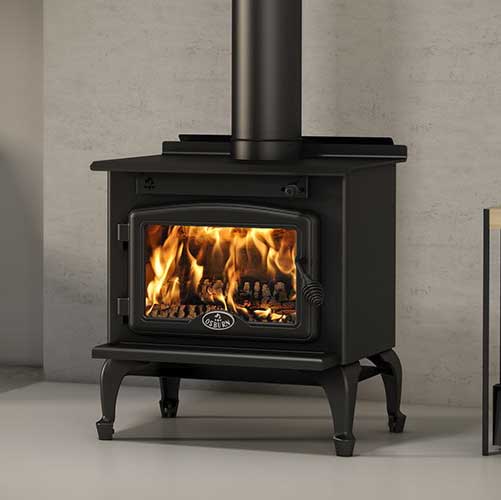
Osburn 900 Wood Stove
Heats up to: 1,000 sq ft
Firebox Capacity: 1.3 cu ft
Size: 40,000 BTUs
EPA Certified: 4.0 gph
Efficiency: 73.5% (LHV)
Burn Time: Up to 5 hours
Maximum Log Length: 17″

Osburn 1600 Wood Stove
Heats up to: 1,800 sq ft
Firebox Capacity: 2.0 cu ft
Size: 65,000 BTUs
EPA Certified: 4.4 gph
Efficiency: 73.0% (LHV)
Burn Time: Up to 6 hours
Maximum Log Length: 17″
Osburn 2000 Wood Stove
Heats up to: 2,100 sq ft
Firebox Capacity: 2.4 cu ft
Size: 75,000 BTUs
EPA Certified: 3.9 gph
Efficiency: 75.2% (LHV)
Burn Time: Up to 8 hours
Maximum Log Length: 20″
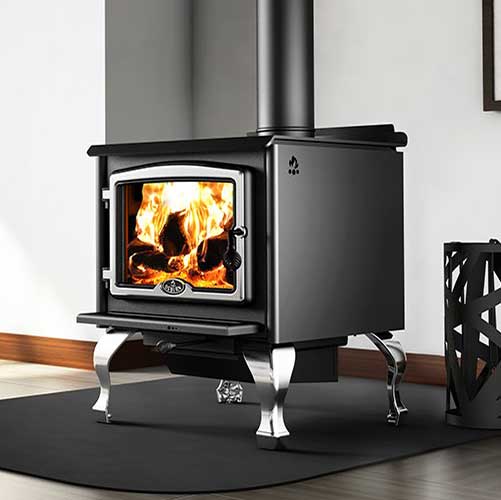
Osburn 2300 Wood Stove
Heats up to: 2,300 sq ft
Firebox Capacity: 3.4 cu ft
Size: 90,000 BTUs
EPA Certified: 4.5 gph
Efficiency: 72.9% (LHV)
Burn Time: Up to 10 hours
Maximum Log Length: 20″
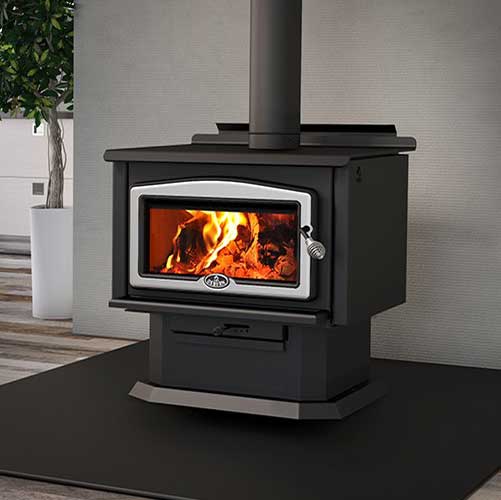
Osburn 2400 Wood Stove
Heats up to: 2,700 sq ft
Firebox Capacity: 3.4 cu ft
Size: 100,000 BTUs
EPA Certified: 3.4 gph
Efficiency: 75% (LHV)
Burn Time: Up to 10 hours
Maximum Log Length: 21″
Regency Wood Stoves
Regency line wood-burning products come highly recommended. What we like about them is twofold – they’re beautiful and they use state-of-the-art engineering that makes them ecologically friendly heaters.
In fact, the Regency line of EPA-certified wood fireplaces are some of the most efficient made today. Their unique design creates optimum conditions for getting the most heat out of every piece of wood you burn. If you are in the market for a new wood fireplace or want to replace the one you have, you can’t go wrong with a Regency.
HearthStone Wood Stoves

Equinox 8000 Wood Stove
Heats up to: 3,500 sq. ft.
Firebox Capacity: 4.0 cu. ft.
Size: Up to 120,000 BTUs
EPA Certified: 3.1 grams per hour
Efficiency: 82% (Low Heating Value)
Burn Time: Up to 12 hours
HeatLife: Up to 16 hours
Maximum Log Length: 25″

Mansfield 8012 Wood Stove
Heats up to: 2,500 sq. ft.
Firebox Capacity: 3.2 cu. ft.
Size: Up to 80,000 BTUs
EPA Certified: 2.9 grams per hour
Efficiency: 77.4% (Low Heating Value)
Burn Time: Up to 10 hours
HeatLife: Up to 14 hours
Maximum Log Length: 21″

Phoenix 8612 Wood Stove
Heats up to: 2,000 sq. ft.
Firebox Capacity: 2.2 cu. ft.
Size: 60,000 BTUs
EPA Certified: 2.4 grams per hour
Efficiency: 75% (Low Heating Value)
Burn Time: Up to 8 hours
HeatLife: Up to 12 hours
Maximum Log Length: 21″

Heritage 8022 Wood Stove
Heats up to: 1,900 sq. ft.
Burn Time: Up to 8 hours
Heat Life: Up to 12 hours
Size: 55,000 BTUs
EPA Rating: 2.77 grams per hour
Efficiency: 81%
Maximum Log Length: 21″
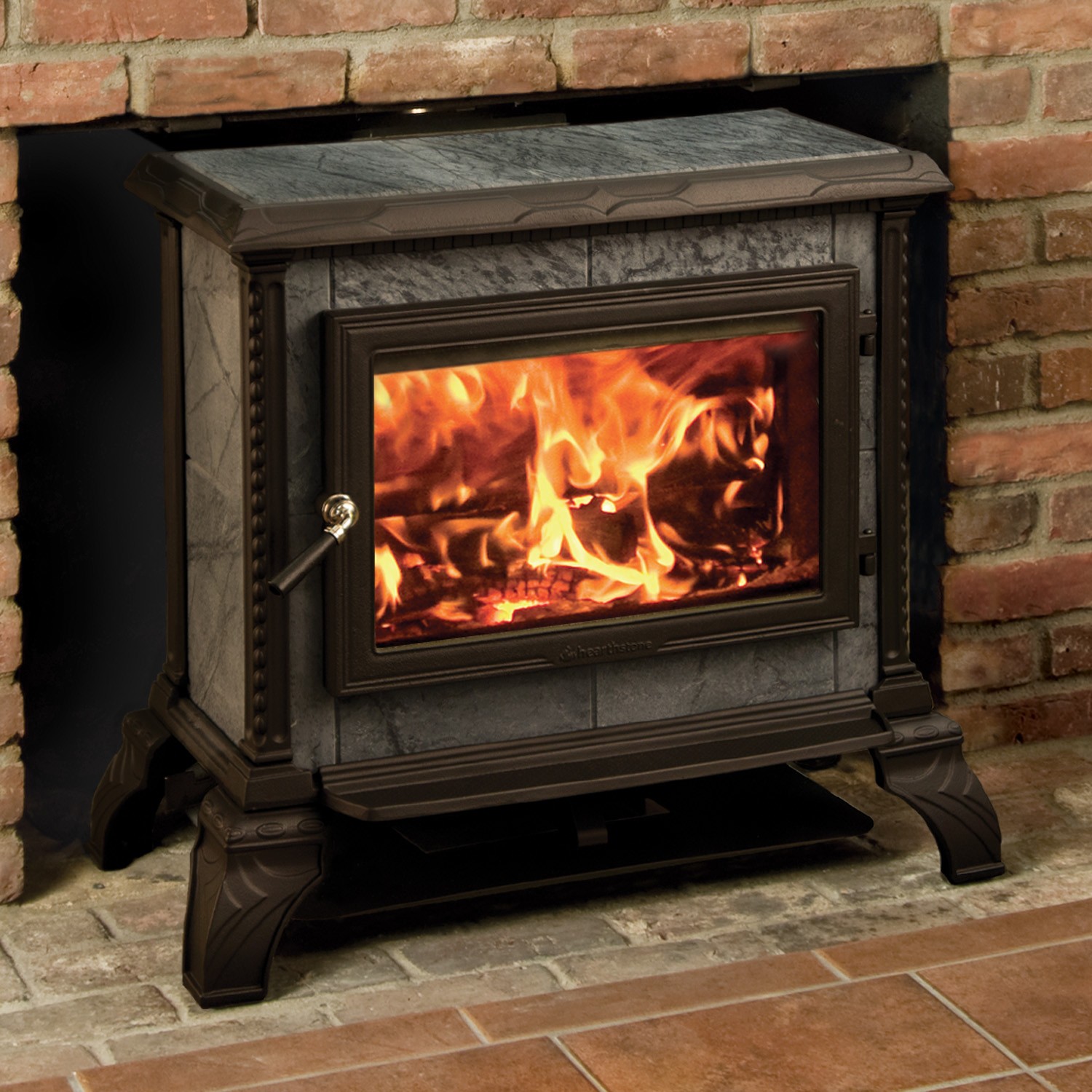
Homestead Freestanding 8570F Wood Stove
Heats up to : 1,800 sq. ft.
Firebox Capacity: 2.0 cu. ft.
Size: Up to 50,000 BTUs
EPA Certified : 1.9 grams per hour
Efficiency: 83.5% (Low Heating Value)
Burn Time: Up to 8 hours
HeatLife: Up to 12 hours
Maximum Log Length: 19″

Castleton 8030 Wood Stove
Castleton 8030 Wood Stove
Heats up to: 1,500 sq ft
Firebox Capacity: 1.9 cu ft
Size: Up to 45,000 BTUs
EPA Certified: 2.7 gph
Efficiency: 78% LHV
Burn Time: Up to 8 hours
HeatLife: Up to 10 hours
Maximum Log Length: 18″
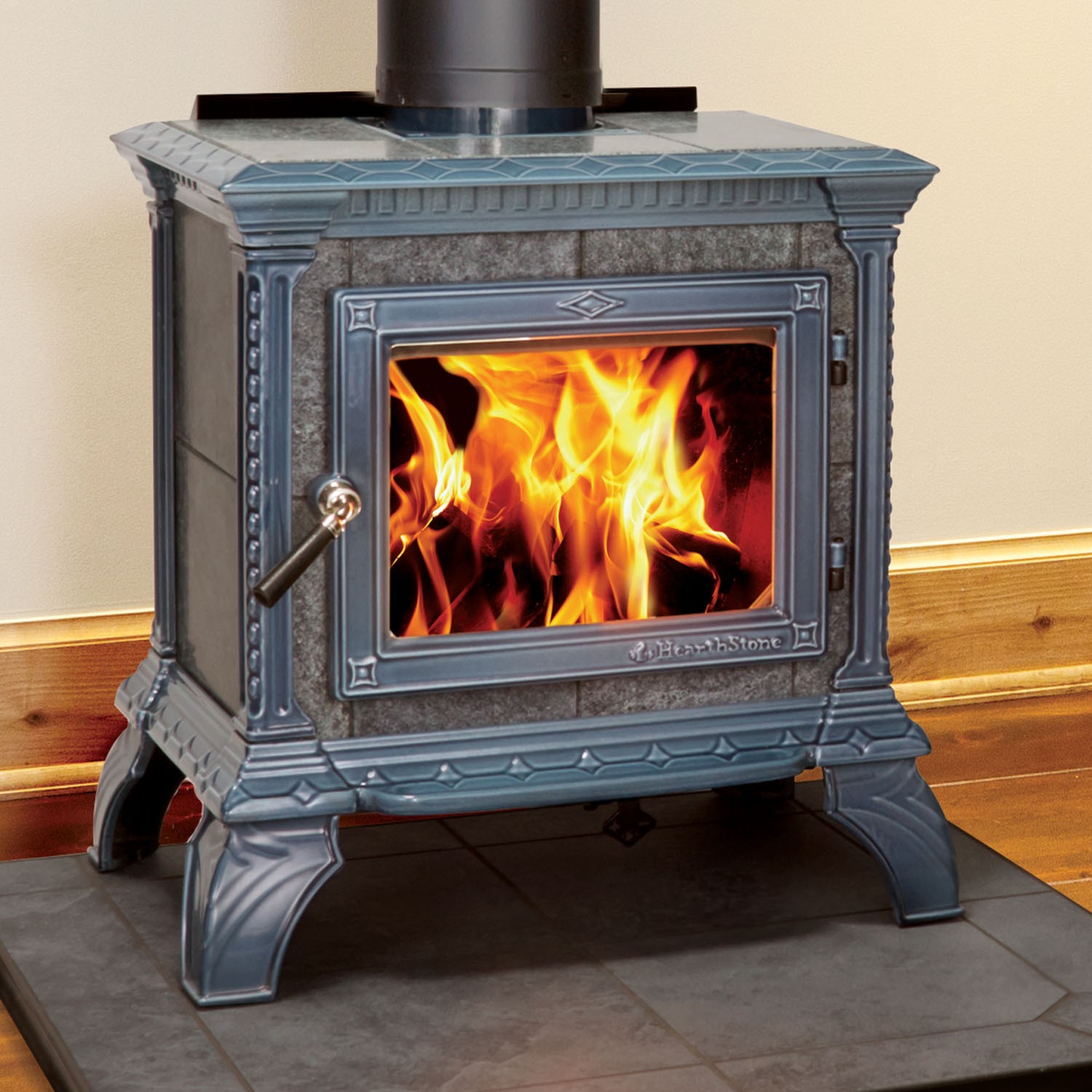
Tribute 8040 Wood Stove
Heats up to: 1,000 sq ft
Firebox Capacity: 1.2 cu ft
Size: Up to 36,000 BTUs
EPA Certified: 3.0 gph
Efficiency: 80% LHV
Burn Time: Up to 5 hours
HeatLife: Up to 7 hours
Maximum Log Length: 16″

Bari 8170 Wood Stove
Heats up to: 1,400 sq ft
Firebox Capacity: 1.5 cu ft
Size: Up to 35,000 BTUs
EPA Certified: 3.6 gph
Efficiency: 80% LHV
Burn Time: Up to 6 hours
Maximum Log Length: 17″

Lima 8150 Wood Stove
Heats up to: 1,400 sq ft
Firebox Capacity: 1.5 cu ft
Size: Up to 35,000 BTUs
EPA Certified: 3.6 gph
Efficiency: 80% LHV
Burn Time: Up to 6 hours
Maximum Log Length: 17″

Tula 8190 Wood Stove
Heats up to: 1,200 sq ft
Firebox Capacity: 1.4 cu ft
Size: Up to 30,000 BTUs
EPA Certified: 2.6 gph
Efficiency: 88% LHV
Burn Time: Up to 6 hours
Maximum Log Length: 17″ (loaded vertically)

Deva 8220 Wood Cookstove
Firebox Capacity: 1.6 cu ft
Size: Up to 46,000 BTUs
EPA Rating: Exempt
Maximum Log Length: 17″
Flue Exit & Diameter: Top or Rear – 6″
Oven Capacity: 2.5 cu ft
Cast Iron stoves, fireplaces and inserts are becoming more and more popular. Find the right one for you in our fireplaces and stoves choices.



